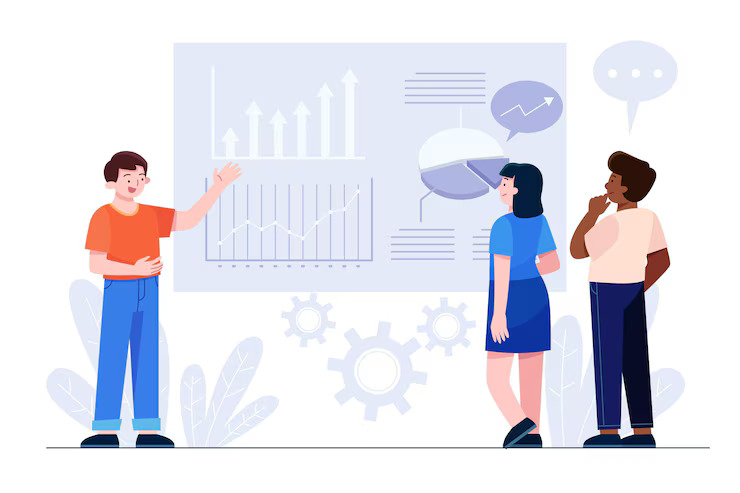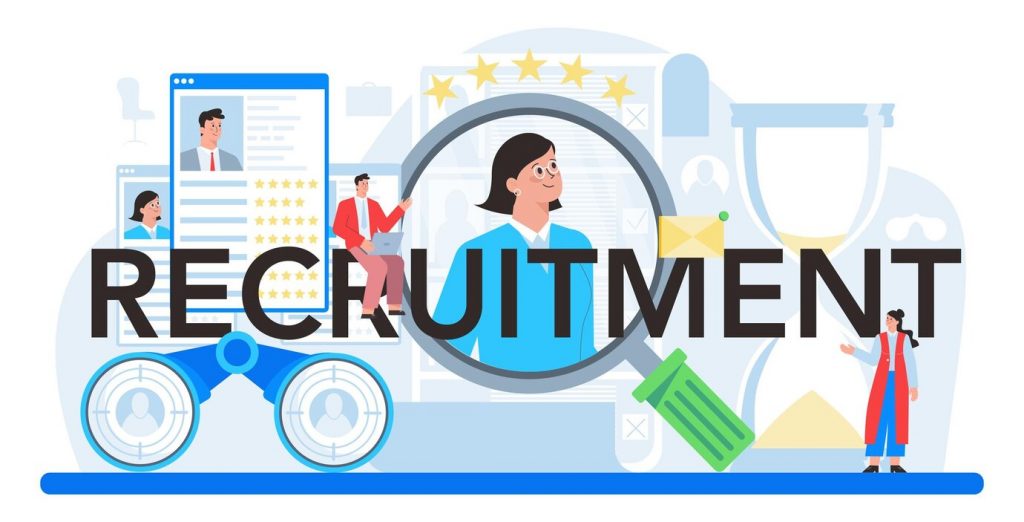Introduction
In today’s fast-moving digital economy, the success of any organization hinges not just on capital or technology—but on talent. Companies are rapidly transforming, and yet, a persistent challenge continues to widen: the skill gap. Despite rising investments in hiring and development, many organizations still struggle to align current employee capabilities with evolving business needs.
Skill gap analysis is no longer a luxury; it’s a strategic necessity. This process helps companies measure the difference between existing skill sets and those required to meet future goals. It plays a critical role in organizational planning, workforce optimization, and talent management. According to McKinsey, 87% of companies worldwide are aware that they either already have a skills gap or will experience one within the next five years. The pressure is on, and leaders must act.
As remote work expands and automation disrupts traditional roles, skills are no longer static. The half-life of a learned skill is now about five years, with more technical skills falling to less than three. Organizations must therefore think of skill management as a dynamic, real-time process that evolves alongside their business goals.
What is Skill Gap Analysis?
At its core, skill gap analysis is the structured process of identifying the disparity between the skills employees currently possess and the skills required for their roles or future positions.
Think of it as a workforce diagnostic tool. Just as a doctor uses a medical exam to identify health deficiencies, HR professionals use skill gap analysis to uncover capability deficits that can compromise business health.
More than a checklist, it’s a dynamic framework. It involves:
- Defining key competencies for roles
- Auditing employee capabilities
- Identifying shortfalls
- Planning interventions like training, upskilling, or hiring
Companies using workforce gap analysis as part of their strategic planning are better equipped to handle industry disruptions. For instance, Amazon launched a $700 million initiative to upskill 100,000 employees by 2025—signaling that the future of work starts with closing today’s skill gaps.
Skill gap analysis also helps define future learning strategies. By aligning skills with evolving job requirements, HR teams can develop competency frameworks and learning paths tailored to organizational priorities. This targeted approach reduces wasteful training spend and accelerates capability building.
Why is Identifying Skill Gaps Important?
Failing to address skill gaps costs companies more than productivity—it threatens growth, innovation, and competitive edge. A report by Deloitte found that organizations with proactive workforce planning are 60% more likely to be in the top quartile of financial performance.
Key implications of unaddressed skill gaps:
- Lower Productivity: Employees without the right skills take longer to complete tasks or produce lower-quality outcomes.
- Higher Turnover: Talented individuals often leave when they feel unsupported or misaligned with their roles.
- Delayed Innovation: Companies may fall behind in adopting new technologies due to internal knowledge barriers.
In 2022, the UK Government reported a £6.33 billion productivity loss due to digital skill gaps alone. This isn’t isolated to tech: healthcare, manufacturing, finance, and logistics are all grappling with similar challenges.
Real-world example: In the manufacturing sector, 2.1 million jobs could go unfilled by 2030 in the U.S. due to skill mismatches, according to The Manufacturing Institute. That translates into a potential economic impact of $1 trillion.
Moreover, employee engagement is directly linked to competency alignment. Gallup’s research shows that teams who feel their strengths are well utilized are 8% more productive and 15% less likely to quit. Clearly, identifying skill gaps isn’t just an operational exercise—it’s a culture-building strategy.
Types of Skill Gaps in the Workplace
To solve a problem, we must first classify it. Skill gaps can be grouped by type and scope.
Hard Skills vs. Soft Skills
- Hard Skills are technical competencies—like data analysis, coding, or surgical techniques.
- Soft Skills refer to interpersonal or cognitive abilities—such as communication, leadership, and adaptability.
According to LinkedIn’s 2023 Workplace Learning Report, 89% of HR leaders say that soft skills are equally or more important than hard skills. Yet they are also harder to assess and train.
Technical vs. Interpersonal
- Technical Gaps often emerge in rapidly evolving industries like IT, AI, and biotech.
- Interpersonal Gaps are common in leadership transitions, customer-facing roles, or cross-cultural teams.
JobTwine’s structured interview simulations allow employers to assess both hard and soft skills in real-time, reducing guesswork and improving hiring accuracy.
Another overlooked category is role-based skill gaps—where an employee’s core strengths may not fully align with their current responsibilities. This is especially common in startups or high-growth companies where roles evolve faster than training programs.
How to Conduct a Skill Gap Analysis in HR
Performing a skill gap analysis requires a structured, repeatable process. Here’s how HR teams can approach it:
1. Define Roles and Expectations
Start by identifying key competencies for each role. Use job descriptions, performance data, and industry benchmarks. Partner with department heads to ensure alignment with business goals.
2. Evaluate Current Skills
Conduct assessments, manager reviews, peer evaluations, and employee self-assessments. Tools like 360-degree feedback and JobTwine’s performance mapping features provide deep insight into team capabilities.
3. Identify the Gap
Analyze where expectations and current performance diverge. This can be done through:
- Proficiency scoring matrices
- Heatmaps showing departmental gaps
- Succession risk models for leadership roles
4. Plan the Intervention
Choose from a mix of upskilling, reskilling, hiring, or reallocation. Prioritize based on business urgency and resource availability.
Pro Tip:
Use JobTwine’s skill diagnostics to benchmark candidate capabilities and ensure new hires don’t replicate existing team weaknesses.
A successful skill gap analysis also includes a communication strategy. Sharing insights with team leads and employees helps foster a growth mindset and promotes transparency across the organization.
Tools for Skill Gap Analysis in the Workplace
The days of relying solely on spreadsheets are gone. Today’s skill gap assessments leverage smart platforms and real-time data.
Top Tools:
- LinkedIn Talent Insights: Real-time labor market trends, talent pools, and competitor benchmarking.
- SkillSurvey: Predictive assessments for pre-hire evaluations.
- JobTwine: AI-powered skill testing and interview simulations tailored to role-specific competencies.
- Degreed: Tracks employee learning journeys and skill progression.
- Gloat: Internal talent marketplace to match employees with projects based on skill sets.
Manual vs. Automated:
Manual skill assessments (e.g., surveys, interviews) offer qualitative insights but are time-consuming. Automated platforms provide scale, consistency, and analytics, making them ideal for growing or global organizations.
The best platforms integrate seamlessly into existing HR tech stacks and provide dashboards, benchmarking tools, and predictive analytics. This integration enables real-time decision-making and supports strategic workforce planning.
Closing the Skill Gap: Solutions & Strategies
Identifying the gap is only half the battle. The real ROI lies in how effectively organizations close it.
1. Training and Development
Create role-based learning paths. Encourage certification programs, online courses, and mentorship. Companies like AT&T have invested over $1 billion in workforce reskilling to stay competitive in the digital age.
2. Upskilling and Reskilling
- Upskilling deepens current capabilities.
- Reskilling prepares employees for entirely new roles.
According to the World Economic Forum, 50% of employees will need reskilling by 2025. Those who invest early will win the talent race.
3. Smart Recruitment
Hiring to fill gaps is efficient but must be data-informed. JobTwine’s analytics dashboard helps recruiters map incoming talent against known gaps, ensuring new hires are additive, not redundant.
4. Internal Mobility
Encourage cross-functional movement. Internal mobility not only fills gaps faster but improves retention by up to 41%, according to LinkedIn.
Closing skill gaps also demands a mindset shift from one-size-fits-all training to personalized learning journeys. Tailored interventions, peer learning cohorts, and AI-driven coaching are gaining traction as scalable, high-impact solutions.
Final Thoughts: Preparing for the Future Workforce
The future of work is defined by agility, not certainty. The organizations that will thrive are those that embed skill gap analysis into their DNA. This is not a one-time audit—it’s a continuous strategy.
With AI, automation, and remote work reshaping industries, proactive HR teams must evolve from reactive problem-solvers to predictive workforce architects. Tools like JobTwine don’t just evaluate skills—they enable smarter hiring, better retention, and real-time workforce planning.
As we move into an era of exponential change, the cost of inaction grows. Organizations must reframe workforce planning from headcount to capability. Because in the talent economy, skills are the currency of growth.
Investing in skill gap analysis today will determine who thrives—and who’s left behind—tomorrow. Build your future-ready workforce now.
Frequently Asked Questions:
1. What are common causes of skill gaps?
Rapid technological change, outdated training programs, poor workforce planning, and evolving customer demands are leading causes of skill gaps.
2. How often should you conduct a skill gap analysis?
Ideally, every 6–12 months or during major business changes like expansion, digital transformation, or restructuring.
3. How does skill gap analysis affect hiring decisions?
It helps recruiters hire with precision by focusing on actual capability needs rather than assumptions—reducing turnover and boosting performance.
4. Can skill gap analysis help with employee retention?
Yes. Employees are more likely to stay when they see a clear development path. Skill gap analysis enables tailored training and growth plans.
5. How does JobTwine support skill gap analysis?
JobTwine uses AI-powered simulations and assessments to benchmark current team skills, identify hiring gaps, and match candidates to competency requirements.




